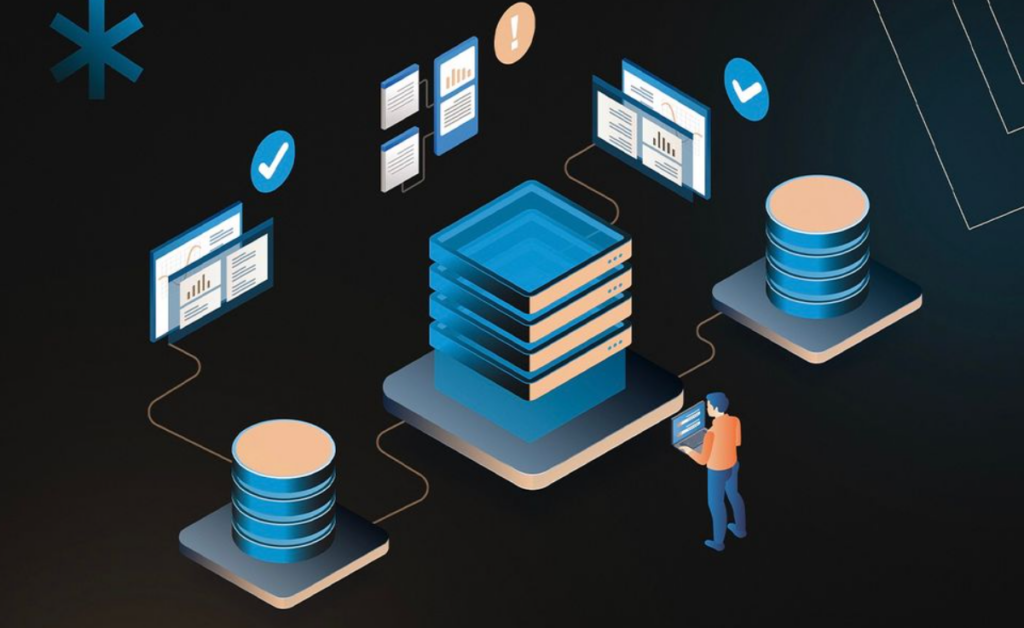
Ruby on Rails (RoR) is a popular web development framework known for its simplicity and convention over configuration. While many developers love its ease of use and rapid development capabilities, working with Ruby on Rails can come with its own set of challenges. Here, we’ll explore the top 10 challenges developers face when using Ruby on Rails and provide practical solutions to overcome them. Each challenge discussed will include key insights to guide developers in effectively addressing these issues.
1. Performance Issues, Top Challenges and Solutions in Ruby on Rails

One of the most common challenges in Ruby on Rails is performance, especially as the application scales. This is primarily due to its monolithic architecture and dynamic nature. Performance issues can manifest in slow response times, long page loads, or increased server resource consumption.
Solution:
Optimize database queries, use caching mechanisms like Redis or Memcached, and ensure that your code adheres to best practices. Implementing background jobs with tools like Sidekiq can help offload time-consuming processes, improving the overall responsiveness of the app. Additionally, consider lazy loading and pagination techniques to handle large data sets more efficiently. Profiling tools like Bullet can identify N+1 query issues, which are a common source of performance bottlenecks. Regularly reviewing application logs and metrics allows developers to identify high-latency routes and optimize them. Furthermore, consider optimizing asset delivery by compressing images and minifying JavaScript and CSS files.
2. Scaling Applications, Top Challenges and Solutions in Ruby on Rails

Scaling a Ruby on Rails application can be difficult when handling increased traffic and complex data operations. High traffic loads can result in slow database queries and long-running requests.
Solution:
Horizontal scaling using multiple servers, load balancing, and implementing microservices where necessary can aid in handling growth. Using tools like Kubernetes and Docker for containerization can also simplify deployment and scaling. Integrating a content delivery network (CDN) such as Cloudflare or Akamai can further enhance performance by caching static assets and distributing them globally. Database partitioning and sharding strategies can help manage larger datasets more efficiently. Employing read replicas for databases ensures that read-heavy traffic is distributed, reducing the load on the primary database. Additionally, optimizing background job queues with tools like Sidekiq Pro or Resque Scheduler ensures smoother processing under high-load conditions.
3. Memory Leaks, Top Challenges and Solutions in Ruby on Rails

Memory management in Ruby can be challenging, leading to potential memory leaks that degrade performance over time. Memory leaks can go unnoticed for long periods and can lead to increased hosting costs and application downtime.
Solution:
Regularly monitor your application with tools such as New Relic, ScoutAPM, or Skylight to detect and address memory leaks early. Code profiling and ensuring efficient use of memory within your Ruby classes can prevent bloat and keep your app running smoothly. Regular garbage collection tuning and monitoring can also help maintain memory usage at optimal levels. Employing lightweight libraries and avoiding memory-heavy operations when possible can contribute to better memory management. Another practice involves using object allocation analysis tools to identify and rectify unnecessary object creation, reducing strain on system memory.
4. Security Concerns
Like any web framework, Ruby on Rails is not immune to security vulnerabilities such as SQL injection, Cross-Site Scripting (XSS), and Cross-Site Request Forgery (CSRF). Security breaches can result in compromised user data and a damaged reputation.
Solution:
Keep your Rails version up-to-date, follow secure coding practices, and use built-in protections like Rails’ sanitize methods. Employ security gems such as Brakeman for static code analysis and implement regular security audits. Additionally, integrating user authentication and authorization tools like Devise and Pundit ensures robust user access controls. Regularly reviewing third-party gem security advisories and patching any vulnerabilities promptly is essential for maintaining the integrity of your application. Employing SSL/TLS encryption for data transmission and hashing passwords with modern algorithms like bcrypt add layers of security that safeguard user information.
5. Maintaining Code Quality, Top Challenges and Solutions in Ruby on Rails
Ensuring consistent code quality can be difficult, especially in a large, collaborative project. Poor code quality can lead to bugs, reduced maintainability, and higher technical debt.
Solution:
Use automated testing tools like RSpec and integration tests with Capybara to maintain quality throughout development. Adopting coding standards and conducting regular code reviews ensures that all team members adhere to best practices. Utilize linters such as RuboCop to enforce style guides and detect code smells. Establishing clear guidelines for pull requests and fostering a culture of constructive feedback can enhance the overall code quality in collaborative projects. Encouraging developers to refactor code regularly helps reduce technical debt and ensures that the codebase remains maintainable. Pair programming and mob programming sessions can also contribute to higher code quality through collaborative problem-solving.
6. Monolithic Architecture Limitations
Ruby on Rails’ monolithic structure can sometimes limit flexibility, making it harder to implement certain modern architectural practices. Monolithic architectures can lead to tightly coupled code, making it challenging to scale or integrate new technologies.
Solution:
Consider refactoring parts of your application into microservices or using gems like Trailblazer for better business logic organization. Separating concerns can make the code more manageable and testable. Adopting a service-oriented architecture (SOA) or event-driven approach can offer more flexibility and scalability. Employing modular patterns and domain-driven design (DDD) principles can further reduce tight coupling and improve code maintainability. For teams not ready for full microservices, using a modular monolith approach allows components to be developed independently within the monolith while preparing for a future transition to microservices.
7. Complex Dependencies
Handling dependencies in Ruby on Rails can be overwhelming, particularly when dealing with gem conflicts and outdated libraries. The use of many third-party gems can lead to version mismatches and maintenance challenges.
Solution:
Regularly audit your Gemfile and Gemfile.lock to remove unused or outdated gems. Tools like Bundler Audit and Dependabot can help manage and update dependencies securely. Additionally, maintaining a clean dependency tree and avoiding over-reliance on third-party gems can reduce the risk of conflicts. Pinning gem versions and documenting dependency rationale helps teams stay informed about the tools in use. Ensuring that gems are actively maintained and compatible with the current Rails version helps reduce compatibility issues.
8. Deployment Challenges
Deploying a Ruby on Rails application can sometimes be complex and error-prone, particularly with configuration management. Issues during deployment can lead to downtime and disrupted services.
Solution:
Use deployment tools like Capistrano, or modern CI/CD platforms such as GitHub Actions, CircleCI, or Jenkins to automate the deployment process. Containerizing your app with Docker and deploying through cloud platforms like AWS or Heroku can further streamline the deployment workflow. Using infrastructure as code (IaC) tools like Terraform or Ansible can help maintain consistent deployment configurations across environments. Ensuring robust logging and monitoring practices during deployment can also aid in detecting and resolving potential issues early. Incorporating health checks and automated rollback mechanisms can prevent long periods of downtime by enabling rapid recovery in case of deployment failures.
9. Long Boot Time
Long boot times can slow down the development process, impacting productivity. This can be particularly frustrating during testing and debugging cycles.
Solution
Utilize tools like Spring to preload your application and reduce boot times. Analyze your config/application.rb and trim any unnecessary initializers or libraries that may be bloating the startup time. Additionally, consider using code splitting to load only essential parts of the application during boot and load other components as needed. Leveraging profiling tools to pinpoint areas of delay can also help in minimizing boot times and optimizing the development process. Preloading large datasets or external dependencies asynchronously can help ensure that the application starts faster without compromising functionality.
10. Version Compatibility Issues
Keeping up with Ruby on Rails version updates and ensuring compatibility with third-party gems can be daunting. Failing to keep your app updated can result in missed security patches and deprecated features.
Solution
Stay proactive by reading Rails release notes and adopting a strategy for incremental updates. Use tools like rails app:update to ease the process and manage compatibility testing with CI tools to avoid disruptions. Conducting version update dry runs in staging environments ensures minimal issues when moving updates to production. Collaborating with team members to test and report version-specific bugs can streamline the update process. Implementing automated test suites for backward compatibility ensures that existing features continue to work seamlessly after updates. Documenting the upgrade process and lessons learned can help teams prepare for future updates with less friction.
Final Thoughts
While Ruby on Rails presents various challenges, a proactive approach, utilizing the right tools and strategies, can help developers overcome these obstacles effectively. By understanding these common challenges and their solutions, you can build robust, scalable, and secure Ruby on Rails applications with greater confidence. Embracing continuous learning and engaging with the Rails community for support and insights can also pave the way for smoother development experiences. This way, teams can harness the full power of Ruby on Rails, ensuring long-term success and innovation. Taking the time to document best practices, conduct post-mortem analyses after major issues, and foster a culture of code ownership helps in maintaining a healthy and adaptable development environment. Whether you’re a seasoned developer or new to Ruby on Rails, staying informed and adaptable is key to turning challenges into opportunities for growth and advancement.